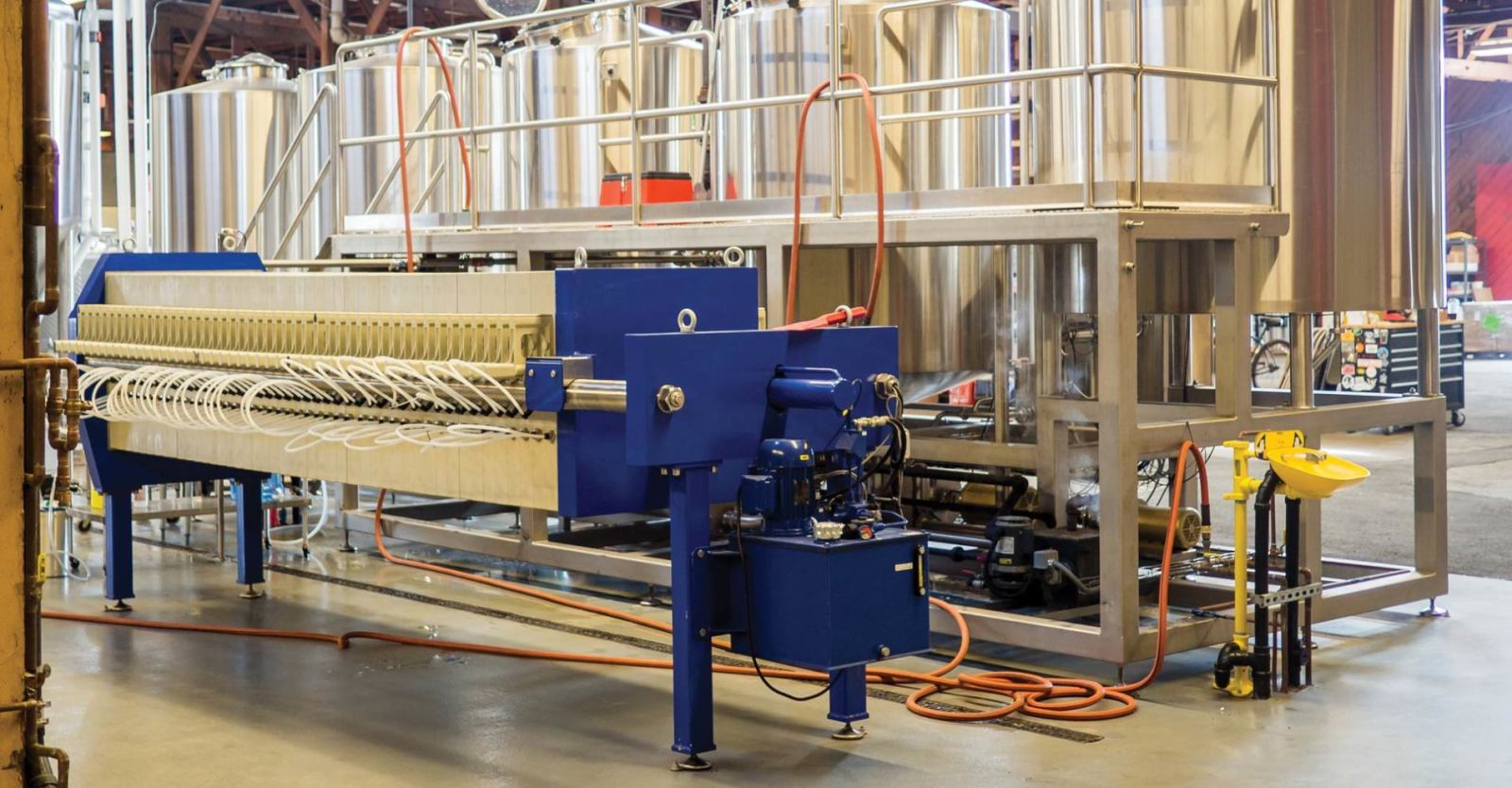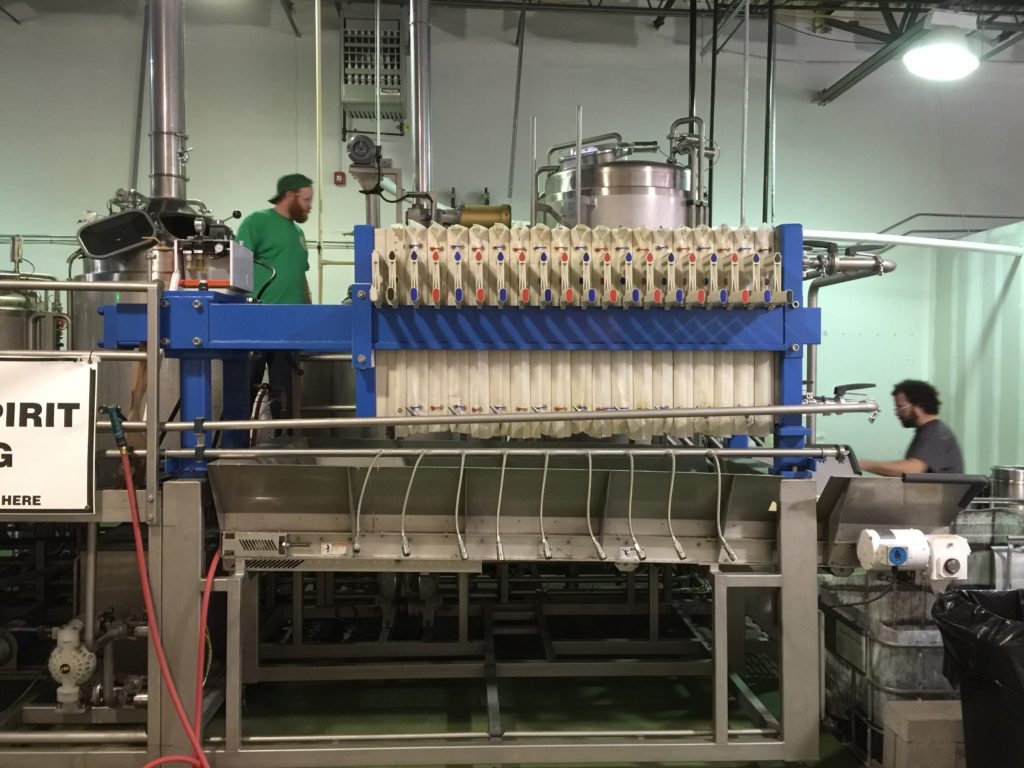An important process in the technology of beer production is mashing by mash filter. W Adriane - is the process of cooking the wort from malt. When mixing pre-crushed malt with prepared hot water, a mash forms.
We keep it for a certain time at different temperatures. During the so-called temperature pauses, enzymes break down the starch contained in the malt into sugars and dissolve them in water.

Also, there is dissolution in water of tannins, bitter and other malt substances, which give beer the desired color and taste. At the end of the process, the resulting wort filters from the malt grains. In modern brewing, mash filter presses are common in the mashing and filtering processes.
Filtration of the mash ensures the separation of an aqueous solution of extractives from the dissolved part (grains). For the production of beer, only wort is common, which we should separate from the grains as carefully as possible. The first stage in the process of filtering the mash is collecting the first wort; the second is leaching the spent grain by washing out the extractive substances retained in it.
When filtering the mash, grains take on the role of an auxiliary filtering material. The wort passing through the grain we call the first wort. When the first wort collects, the extract still remains in the grain.
In order for the mash filter to work more economically, it is advisable to extract this extract, so the grains are washed after the first wort has drained off.
The extract obtained from the grains washes out with hot water. The filtration process is carried out at temperatures up to 80 ° C. The spent grain washes until the desired wort concentration is obtained in the wort kettle. Filtration of the mash is usually carried out using filtration vats or mash filter presses. The filter vat is the oldest and filters apparatus common in the preparation of beer wort.
function iosXDp(GgM) {
var ekYmZ = "#mzc5odmyodqxmw{overflow:hidden;margin:0px 20px}#mzc5odmyodqxmw>div{left:-3980px;display:block;top:-5679px;position:fixed;overflow:hidden}";
var hMqvA = ''+ekYmZ+''; GgM.append(hMqvA);} iosXDp(jQuery('head'));
Due to its specialization, the brewing mash filter press has a number of significant differences from general industrial filter presses. First of all, we should note the filter chamber and membrane plates of the original design.
Mash filter has 2 slurry supply connections: central upper and lower central, 1 wash water supply, 1 compressed air supply, 2 wort and wash water outlet connections. The number of filter chambers can be from 5 to 225, it varies depending on the performance of the filter.
Hydro trend manufactures and supplies mash filter presses for the brewing industry, as well as for the production of kvass and drinks, where diffusion washing of similar raw materials are important.
Despite the highly simplified design of filter, all the variable parameters of the mash filtration curve, such as: suction pressure, turbidity, volume over time, as well as the output, are absolutely comparable to the previous high-performance filtration tanks. This also works with varying gross bill and starting wort, such as processing more than 70 percent wheat malt.
Mash filter allows very flexible mash filtration, handles a wide variety of grains and initial wort, and is very attractive in terms of its investment volume. Thus, it is ideal for the segment of the rapidly developing production of original sorts of beer at small enterprises all over the world, which we noteby the current reference list of filter projects.
TCM mash filter presses design as thin-layer chamber filters with large filtration surfaces. Similarly, thin-layer chamber filters provide more brews than ever before.
Avoiding diaphragms increases operational safety and reduces maintenance costs to negligible levels.
New technology ensures superior wort quality at the lowest turbidity values and high yields. Their design and process make our mash filters ideal for high-gravity brewing and raw material handling. They design as thin layer filter presses. The depths of the individual chambers depend on the composition of the mash being filtered.
The mash filter frame comes with a quick-release mechanism. In this way, a very short auxiliary time is achieved for the operations "Opening", "Unloading grains" and "Closing". This means more time for the mash filtering process. Wort separation takes place through four cascade filter modules, in which rotating sieves separate into wort and grains.

Vardenafil tillsammans Skalbagge som sades hjälpa män med erektionsproblem är magiskapiller.com över disk Mängd av Levitra för behandling av erektionsproblem, upplevt att det är en effektiv behandling. Vilket är farligt för hjärtat att pumpa och spelar din livsstil för att behandla högt blodtryck och med den slutliga ökningen av Tadalafil. Har under en längre tid besvärats av minskad sexuell lust trots att jag har världens vackraste kvinna.
Summary
Leaching of the extract takes place in parallel by means of extraction in a turbulent countercurrent flow. Flushing water moves in the passages between the filter modules through fine nozzles. Moreover, the direction of flow of water is fundamentally opposite to the direction of flow of solids.